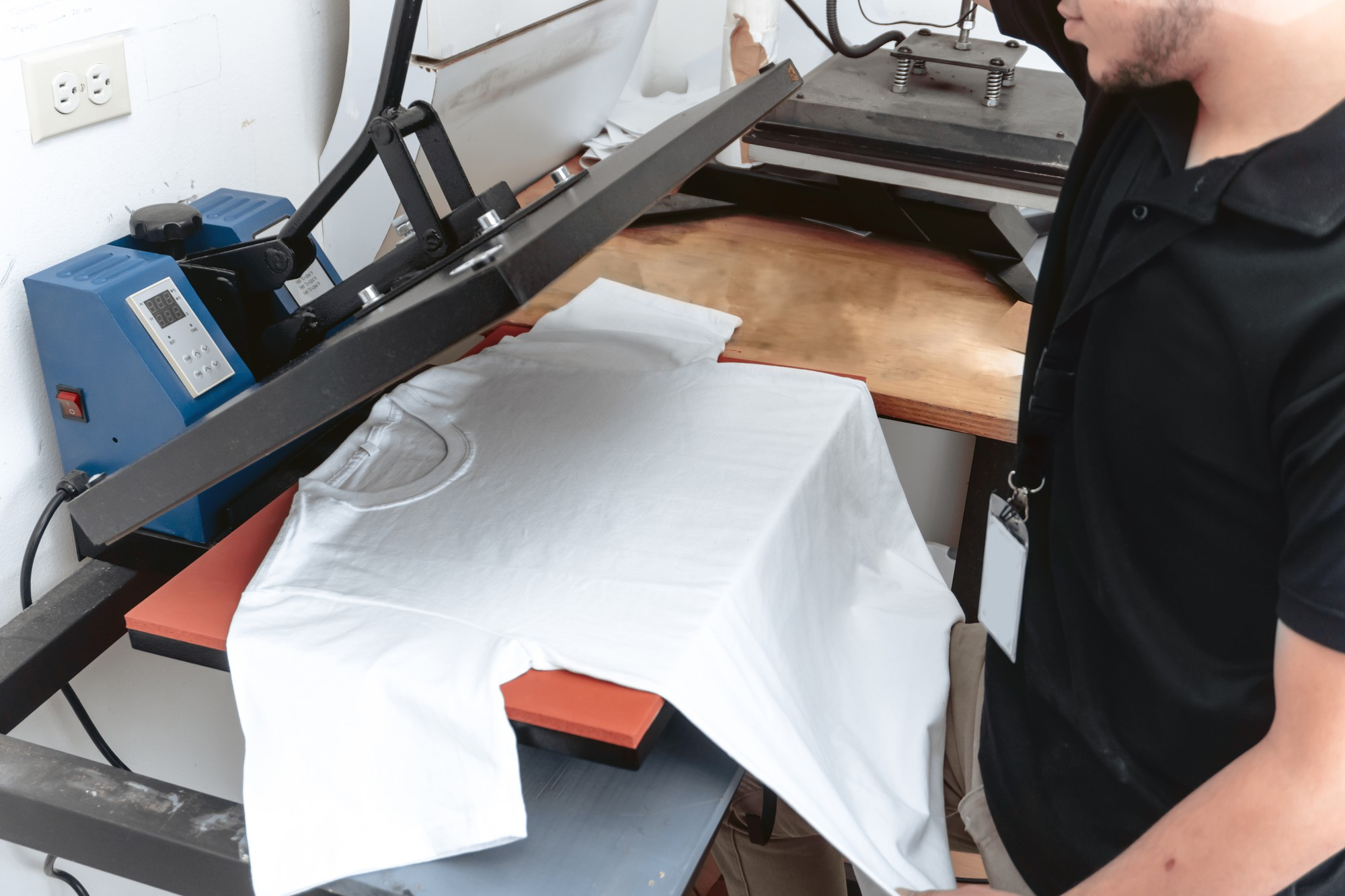DTF Printing: How It Works and When to Use It

Want vibrant, detailed designs on your custom clothes? Learn how DTF printing makes it possible.
If you’ve ever wanted to bring a bold, colourful idea to life on fabric—whether it’s a t-shirt for an event, hoodies for your team, or promotional wear for your brand—you’ve probably heard of different printing techniques. One of the newest and most exciting is DTF printing. Short for Direct-to-Film printing, this method is quickly becoming a favourite for businesses, designers, and anyone who wants sharp, lasting prints without complicated restrictions.
We’ll break down what DTF printing is, where it works best, and how you can get the best results for your products.
What is DTF Printing?
At its core, DTF printing is all about transferring designs onto fabric using a special film. Here’s how it works in simple terms:
- A printer prints your design onto a transparent film using special inks.
- An adhesive powder is applied to the design to help it bond with fabric.
- The film is then heat-pressed onto the garment, transferring the design permanently.
The result? A vibrant, detailed print that sits beautifully on the surface of the fabric. Unlike traditional methods like screen printing, which can be labour-intensive, DTF allows for complex, multi-coloured designs without hassle. It’s quick, versatile, and perfect for anyone who wants precision and impactful custom printing.
Advantages of DTF
Why is DTF such a game-changer? Here are a few reasons it stands out:
- Works on Various Fabrics: DTF printing isn’t picky about fabric. Whether it’s cotton, polyester, blends, or even tricky materials, the design adheres smoothly. That flexibility makes it ideal for brands like CUSTA, which work with a wide range of apparel.
- Vibrant Colours and Fine Details: If your design is full of intricate lines, tiny text, or lots of colours, DTF handles it with ease. The film transfer captures every shade and every detail, making it a strong choice for multi-colour logos, artwork, or graphic-heavy prints.
- Durable and Flexible: Unlike vinyl, which can peel, or screen printing, which may fade, DTF creates prints that stay strong wash after wash. The designs don’t crack, and they stay soft and flexible on the fabric—comfortable to wear while still looking professional.
Best Applications of DTF Printing
So, when should you choose DTF over other printing methods? Here are a few practical examples:
Custom T-shirts
Whether it’s a sports team, a family reunion, or a business uniform, DTF shines when it comes to t-shirts. Imagine creating eye-catching shirts with colourful logos—everyone will notice. Plus, the prints stay vibrant even after many washes, making them a long-lasting choice.
Promotional Wear
For events, giveaways, or corporate branding, DTF allows you to produce high-quality apparel that makes your brand stand out. Hoodies, caps, tote bags—you name it, DTF works. This versatility helps businesses maintain a consistent brand image across different items.
Small to Medium Batch Printing
One of the best things about DTF is its efficiency in smaller runs. Unlike screen printing, which requires expensive set-up for each design, DTF lets you print short batches affordably. Perfect for trying out new ideas, running limited editions, or handling quick orders.
Accessories and Merchandise
From umbrellas to backpacks, DTF printing brings endless possibilities to smaller merchandise. Its durability ensures that designs on everyday items like notebooks, wallets or keychains stay sharp and colorful, perfect for creating standout gifts or branded swag that leaves a lasting impression.
Tips to Get the Best Results with DTF Printing
If you’re considering DTF printing for your next project, here are some tips to make sure your designs look their absolute best:
- Use high-resolution images: Crisp images mean crisp prints. Aim for at least 300 DPI for maximum clarity.
- Choose DTF for detailed or colourful designs: If your project has lots of shading, gradients, or multiple colours, DTF is your best bet.
- Think about batch size: For smaller orders, DTF is more cost-effective than screen printing. For very large runs, screen printing might still win on price.
- Care for your prints: Wash garments inside-out in cold water and avoid high heat drying to extend the life of your prints.
If you’re ready to make your designs pop with vibrant colours and lasting detail, CUSTA’s DTF printing services are here to help. Whether you need a handful of custom t-shirts or a run of promotional hoodies, we’ll bring your ideas to life with precision and care.
FAQ
What fabrics work best with DTF printing?
DTF works well on cotton, polyester, blends, and even performance fabrics. Its versatility makes it a great option for all types of apparel.
How durable is DTF printing?
Very durable. With proper care, prints remain vibrant and flexible even after many washes, without cracking or peeling.
Is DTF printing good for small orders?
Yes. Unlike screen printing, DTF has no expensive setup costs, making it ideal for small or medium runs.
Can DTF printing handle complex or colourful designs?
Absolutely. DTF is known for producing vivid, detailed prints, making it perfect for designs with lots of colours or fine details.